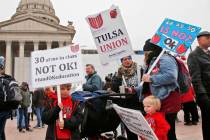National stats reveal foreclosure activity
Foreclosures are up. House prices are down. Mortgages may be toxic. But just how bad is the current housing crisis, really? And should you be worried about your own situation?
The current trends, which include significant jumps in the numbers of foreclosures and overdue mortgage payments, certainly aren't pretty, though finding accurate and useful numbers proves to be a challenge.
More than 1.28 million properties were the subject of some 2.2 million foreclosure notices in 2007, according to RealtyTrac, an online marketplace for foreclosure properties.
Those filings affected only 1 percent of the nation's households, but the 2007 total increased a whopping 79 percent compared with 2006.
Loan delinquencies also rose steadily throughout 2006 and 2007, according to LoanPerformance, a unit of First American CoreLogic.
In November 2007, the most recent month for which data were available, more than 25 percent of borrowers who had a subprime interest-only, payment-option or negative amortization type of loan were more than 60 days late on their payments. More than 21 percent of borrowers who had a traditional 30-year fixed-rate or similar type of subprime loan were more than 60 days late as well.
Not all "60-day lates" result in foreclosure, but overdue payments certainly suggest homeowners are overextended.
Moreover, historical comparisons suggest that today's situation is significantly worse in some respects than the problems that were experienced during in the last housing downturn.
From August 2002 to September 2004, less than 1 percent of nontraditional subprime loans were more than 60 days delinquent, in large part because cash-strapped homeowners could more easily sell their properties.
But even back in the first seven months of 1999, that figure climbed to "only" 14 percent to 18 percent -- high indeed, but still significantly lower than the recent trend line.
Foreclosures are only a
small share of households
These scary-sounding statistics don't tell the whole story, however.
Nationally, even 1.2 million foreclosures, if that many occurred, would represent less than 1 percent of U.S. households, which number about 128 million, according to the U.S. Census Bureau.
More than 60 percent of households didn't have a mortgage in the year 2000, also according to the Census Bureau. Of those, 35 million were mortgageless because they were renters; another 26 million owned their own home outright. None of those folks were in danger of losing their homes to foreclosure.
Another potentially worrisome figure is the number of adjustable-rate mortgages that are expected to reset to higher payments, which may be unaffordable for those borrowers, in 2008 and 2009.
About 51 million mortgages were outstanding in the United States at the end of 2006, again according to the Census Bureau. LoanPerformance recently tracked about 5 million ARMs, and found that 1.3 million, or 35 percent, of the 3.7 million prime ARMs, and 2 million, or 92 percent, of the 2.1 million subprime ARMs were scheduled to reset this year or next year.
That 92 percent sounds like a big number, but the total number of ARM resets amounts to only 3.3 million loans, or 2.6 percent of U.S. households.
Degree of pain varies
among metro areas
Further, national numbers tend to mask regional variations, which show that homeowners in some cities have suffered far more than homeowners in other cities have. That's the case because real estate markets are highly localized, says Rick Sharga, vice president of marketing at RealtyTrac in Irvine, Calif.
"Even in states with high foreclosure rates and real estate values falling through the floor, you are going to find pockets, neighborhoods, where things are fine," he says.
RealtyTrac recently ranked 100 metropolitan areas in terms of the percentage of households that entered some stage of foreclosure in 2007.
At the top of the list were six areas where 3 percent to 5 percent of the households had experienced foreclosure-related activity.
Six areas with high
foreclosure activity
-- Detroit/Livonia/Dearborn, Mich. (4.9 percent).
-- Stockton, Calif. (4.8 percent).
-- Las Vegas/Paradise, Nev. (4.2 percent).
-- Riverside/San Bernardino, Calif. (3.8 percent).
-- Sacramento, Calif. (3.2 percent).
-- Cleveland/Lorain/Elyria/Mentor, Ohio (3 percent).
But at the bottom of the list were six smaller areas where less than 0.2 percent of the households experienced foreclosure-related activity in 2007.
Six areas with low
foreclosure activity
-- Richmond, Va. (0.18 percent).
-- Allentown/Bethlehem/Easton, Pa. (0.17 percent).
-- Honolulu (0.16 percent).
-- McAllen/Edinburg/Pharr, Texas (0.13 percent).
-- Syracuse, N.Y. (0.13 percent).
-- Greenville, S.C. (0.08 percent).
What's more, the underlying causes of housing market distress differed even among the most harshly impacted states, according to CoreLogic's January 2008 forecast of U.S. residential mortgage risk.
In California, the primary factors were "significant declines in home prices, increasing foreclosure rates, a relatively high proportion of nonconforming Alt-A and subprime adjustable-rate mortgages, low housing affordability and investor speculation that boosted housing demand."
But in Michigan, "persistent economic distress and a high incidence of mortgage fraud" were at work, according to the forecast.
Should you be worried?
The dramatic increase in foreclosures, if it continues, may have a severely negative impact on the U.S. economy because housing is one of the nation's largest economic sectors.
But surprisingly little national housing data can be applied to individual homeowners. Indeed, Sharga says, the average person can "pretty much ignore" most of the broad-based data.
"National numbers show trends that are developing or changing, but they don't apply to you personally as a homeowner," he says.
The best advice has been stated and restated, yet remains good advice nonetheless.
If you have an adjustable-rate mortgage, find out how much you owe, when your interest rate will reset and how much your new payments will be.
If you won't be able to afford those payments, contact your lender as soon as possible to discuss any other options that may be open to you.
"Act before you find yourself delinquent," Sharga says "If you wait until you are in trouble, it may be too late."

















